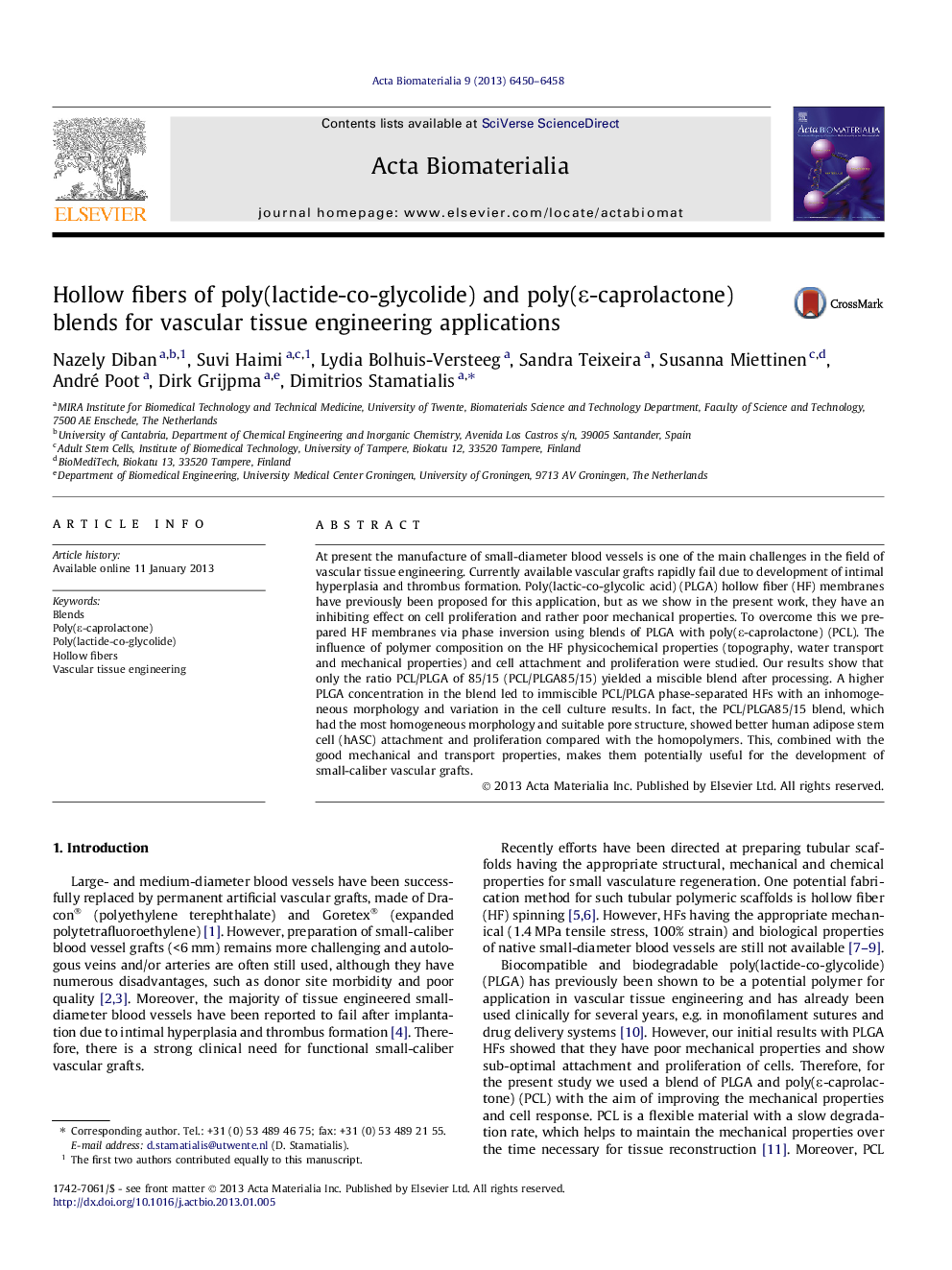| Article ID | Journal | Published Year | Pages | File Type |
|---|---|---|---|---|
| 10159909 | Acta Biomaterialia | 2013 | 9 Pages |
Abstract
At present the manufacture of small-diameter blood vessels is one of the main challenges in the field of vascular tissue engineering. Currently available vascular grafts rapidly fail due to development of intimal hyperplasia and thrombus formation. Poly(lactic-co-glycolic acid) (PLGA) hollow fiber (HF) membranes have previously been proposed for this application, but as we show in the present work, they have an inhibiting effect on cell proliferation and rather poor mechanical properties. To overcome this we prepared HF membranes via phase inversion using blends of PLGA with poly(ε-caprolactone) (PCL). The influence of polymer composition on the HF physicochemical properties (topography, water transport and mechanical properties) and cell attachment and proliferation were studied. Our results show that only the ratio PCL/PLGA of 85/15 (PCL/PLGA85/15) yielded a miscible blend after processing. A higher PLGA concentration in the blend led to immiscible PCL/PLGA phase-separated HFs with an inhomogeneous morphology and variation in the cell culture results. In fact, the PCL/PLGA85/15 blend, which had the most homogeneous morphology and suitable pore structure, showed better human adipose stem cell (hASC) attachment and proliferation compared with the homopolymers. This, combined with the good mechanical and transport properties, makes them potentially useful for the development of small-caliber vascular grafts.
Keywords
Related Topics
Physical Sciences and Engineering
Chemical Engineering
Bioengineering
Authors
Nazely Diban, Suvi Haimi, Lydia Bolhuis-Versteeg, Sandra Teixeira, Susanna Miettinen, André Poot, Dirk Grijpma, Dimitrios Stamatialis,
